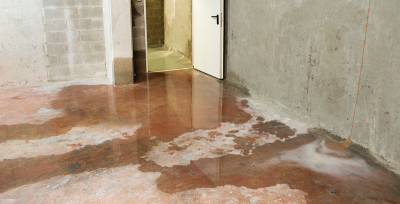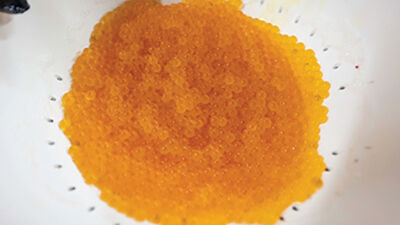METRO DETROIT — For some homeowners, the sight of a rain-filled forecast is enough to fill them with dread because of a potential disaster.
Residents’ pages on Facebook are filled with people going back and forth to see who else had their basements flooded by a storm and to assist each other with names of companies who could help ease an awful situation.
It’s a fight against Mother Nature, who will come out on top in most of the bouts, but it’s important to understand your area, what might make your area susceptible to basement flooding, and how you can defend yourself against a potential flood.
“Most of the homes in Grosse Pointe, St. Clair Shores, and other older cities, their sewers are made out of a different material,” Mike Kish, owner of Motor City Plumbing and Drain in Roseville, said.
“It’s ‘crock pipe’ we call it. It’s a clay ceramic kind of pipe,” Kish said. “The thing is when they built these houses in the ’40s, ’50s and ’60s, they really just butted these pieces up every 2 or 3 feet, they threw some tar around it or maybe a little rubber seal, and they laid it that way. The problem is the tree roots grew right through that little section. Every 2 to 3 feet, you have a joint that the tree roots can go through in this old crock pipe. Up in Macomb and in newer houses, we use a different material such as PVC, and PVC is basically 10-foot length, and with the glue and primer that we do use, it melts the pipe together.”
On the east side, specifically for St. Clair Shores and the Grosse Pointes, Kish said the city infrastructure is aged and hasn’t been repaired, but multiple factors also add themselves into the mix.
Kish, who’s been a plumber for 30 years and services Macomb, Oakland and Wayne counties, said newer houses have an advantage in another area when compared to older homes.
“A lot of the new houses have sump pumps,” Kish said. “They have their sewer that goes out and a sump pump, so they have two different lines. The sewers in Grosse Pointe, St. Clair Shores and other older homes, we call it a combined system, so your sewage and your rainwater both go out in the same pipe. When it storms and you’re using stuff, you’re overloading that pipe sometimes if you got a small blockage in there.”
When it’s not Mother Nature wreaking havoc, it’s nature in general that could be the key cause of basement flooding.
“The big thing really is tree roots,” Kish said. “There’s these trees, and every house has it. People don’t maintain it. Nobody calls and says, ‘Hey, I think I want to maintain my drain and get it snaked out,’you know? People are starting to do that, and that’s what people really need to start doing. They need to start having their drain looked at with a camera and having it snaked out before the big rain or the big storm. We can stick a camera in there and see the condition of the pipe. You have to be proactive.”
Kish said various signs of potential backups can be slow draining, gurgling sounds or water residing by your floor drain in the basement.
Options to combat drain issues are periodic snaking of the drain; hydro jetting the drain, which is basically a snake on steroids that offers more of a five- to seven-year solution; or digging up the sewers to install polyvinyl chloride pipe for a more permanent fix.
If an issue does arise, the restoration process begins to combat any bacteria, extract the water and develop a game plan for the future.
“What we do is we send out a technician — once the call comes in — to go out and meet with the customer to assess the situation and figure out exactly where the water is coming from,” Bryan Graham, project manager for Advance Restoration in Clinton Township, said. “We work in collaboration with a plumber to figure out how to get the water out. … Once we remove the water, any drywall or carpet padding that the water touched, because it’s contaminated water, we have to remove all that stuff. Once we remove everything down to the bare shell, anything that the water has touched we give what’s called a ‘biowash.’ We use an anti-microbial spray in an extraction process where we apply the anti-microbial with hot steam and extract the water back up. That helps kill any bacteria that may be present from the water. Once we do a biowash, then we can set our equipment. We do a calculation based on the cubic footage of the affected areas and the ratings on our dehumidifiers will determine how many fans and dehumidifiers need to be set. It’s usually a three-day drying process.”
Advance Restoration has been in business for 14 years and services Wayne, Oakland, Macomb, St. Clair and other surrounding counties to help homeowners identify the issue causing the basement flooding; help restore contents in the basement such as furniture, clothing, documents and more; and assist with a complete reconstruction of structural damage, water damage and other issues.
Through his experience with customers and being in the business for 18 years, Graham said there’s one piece of advice he gives to all his clients.
“The worst part about it is most homeowners don’t understand when they pay for their (insurance) policy that they may not even have the coverage for those sump pump failures, and those who do typically have a very low capped coverage between $5,000 and $10,000,” Graham said. “You look at somebody who may have renovated their basement and put $40,000 into it in building materials and their contents, and then they have a $5,000 cap and find out they don’t have that coverage until that happens. It’s a very disappointing situation to have to explain to the customer that they’re not covered. Paying out of pocket, especially post-COVID, for services is expensive.”
 Publication select ▼
Publication select ▼
















